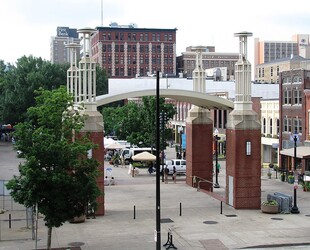Start: An examination of the nexus between Allentown, Pennsylvania, and McGhee Tyson Airport explores a dichotomy of contrasts and connections. A journey that begins at Lehigh Valley International Airport congregates in the foothills of the Great Smoky Mountains on the outskirts of Knoxville, Tennessee. How, you may ask, does Allegiant Air successfully bridge these two distinct geographies?
Aboard an efficient MD-87 aircraft, the discerning air traveler embarks on a journey through America's historic and industrial heartland, cutting south toward the zenith of the Appalachian Mountain Range. Coursing at an altitude of approximately 30,000 feet, passengers are privy to a sweeping vista spanning the Mason-Dixon line to the crest of South Mountain, unfurling below like a topography of undulating waves.
Amid a cacophony of Aeroscience, Allegiant enables travelers to harness the elasticity of time, condensing a terrestrial journey of 13 hours into a trip of just under 2 hours. The precision of air travel timing is further augmented through their efficiency of fleet management and time scheduling, mitigating external factors such as meteorological conditions and air traffic congestion.
In the belly of their aircraft, passengers are indulged with meticulously configured cabins. These cabins are the culmination of ergonomic research and space optimization, contextualized within the complex geometries governing aeronautical engineering. It is a nexus in itself; where elements of comfort, safety, and economy intersect in a configuration of seats, aisles, and overhead compartments. Allegiant Air's goal lies therein – to build a welcoming ambience in a physically restrictive and inherently alien environment.
Meanwhile, their Flight Deck - a veritable cockpit of instruments and electronic marvels - is maneuvered by pilots honed with years of experience and extensive procedural knowledge. Tying this all together, the cabin crew serve as the human face of Allegiant Air’s technical prowess, their rigorous training evident in the seamless provision of in-flight services.
As the approach to McGhee Tyson unfolds, passengers are gradually introduced to the paradox of motion, where speed and distance scale in inverse proportion. The aircraft's velocity is reduced, and the landscape is increasingly magnified: the serpentine Tennessee River comes into sight, weaving its way past the city of Knoxville and beyond towards the rugged topography of the Smokies. Here, the peaceful green terrain stands in contrast to the urbanized landscapes left behind in Allentown. Finally, the journey comes to a halt in the form of a swift, yet controlled, landing on the asphalt veins of McGhee Tyson Airport.
In conclusion, a journey on Allegiant Air from Allentown to McGhee Tyson Airport serves not only as a route between two disparate locations, but as an encapsulation of the human endeavor. It is an exploration of the technical mastery that compresses vast swaths of geographic distance into manageable slices of time. It is the story of human adaptation, both in the unfamiliarity of the sky and the diversity of the Earth below. It is the triumph of overcoming boundaries and extending horizons.
To fly on this route, therefore, is to participate in a grand narrative of continual expansion and connection, a testament to the transformative power of the human mind and its relentless pursuit of innovation.
New bookings







